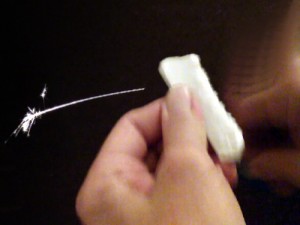 There are basically two characteristics of the “stone” that is used in traditional flint & steel firecraft… it’s harder than carbon steel and it can take a very sharp edge (usually by spalling or knapping). The stone known as “flint” is the traditional rock that is used for this purpose and is categorized as a variety of chert. Although it may look chalky on the outside surface, once it is broken open it reveals a glassy or waxy appearance with conchoidal fracture curves. Agates, quartz, and other glassy rocks can be used as well.
There are basically two characteristics of the “stone” that is used in traditional flint & steel firecraft… it’s harder than carbon steel and it can take a very sharp edge (usually by spalling or knapping). The stone known as “flint” is the traditional rock that is used for this purpose and is categorized as a variety of chert. Although it may look chalky on the outside surface, once it is broken open it reveals a glassy or waxy appearance with conchoidal fracture curves. Agates, quartz, and other glassy rocks can be used as well.
Whether the steel strikes the flint or the flint strikes the steel, the sparks that are created are actually micro particles of the carbon rich steel that are “red hot” when shredded off by the percussion of striking.
In today’s modern world there are materials that are very hard that can be used instead of traditional flint. These are usually found in the form of ceramics. A common source is broken sinks or toilets that are often referred to as “john stone” or “thunder stone”. Another source is broken Corning® Dinnerware or Bakeware. These materials can be acquired in an urban environment and are occasionally used by flint knappers to hone their skills.
This alternative source was the case for me as I was assembling a DIY flint & steel kit for a friend recently. As I searched my basement for all of the kit’s components, I couldn’t find a suitable stone. I passed by my flint knapping area and noticed some Corning® pieces where I had been working on an arrowhead. I picked up a piece to test it for sparks and “presto!” it worked great! It dawned on me that I no longer had to rely on rocks for a flint to make a functional kit.
Esthetically a rock is more traditional to flint & steel firecraft but now I know that alternative materials can be used to make a fire when needed.


